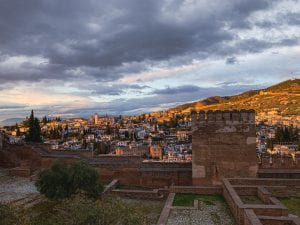
Yesterday I turned in my last assignment for my class at the University of Granada and am now officially finished with my study abroad semester. The end was wonderfully fun and sad at the same time. IES held a cocktail party on a beautiful terrace facing the mountains and Alhambra, during which everyone had the chance to say goodbye to housemates, friends, professors, and staff. Knowing I would most likely never see many of the people I met this semester was one of the worst things about studying abroad and traveling, and yet it also changed relationships in good ways as well. When you know you only get a few months, days, or hours to spend with someone, it makes the time more valuable and makes you focus on enjoying the present moment with them.
This semester I learned of the word saudade, which in the Portuguese language gives a name to the feeling of being in a deep emotional state of nostalgic or profound melancholic longing, especially for something you are currently experiencing. It is the feeling of missing something before it has fully left. As the days until my flight home counted down, I found myself experiencing saudade quite often, especially on buses, passing through beautiful landscapes or listening to really good music. It made it especially hard when the bus ride came after an incredible day out experiencing a new aspect of a city, a new place out in the countryside, or simply learning more about the wonderful people around me.
 .
. 
I will miss the landscape of Granada, with old buildings, traditions, and celebrations that draw you into the past. The neighborhoods that each have a distinct feeling and story to tell. I’ll miss the hikes up to the various miradores where you can see the city laid out before you, and the sunset turning the buildings pink and blue while their yellow lights blink on a few at a time.
I will miss walking the streets of Granada late into the night, feeling the energy of the hustling crowd around me and observing the mix of students going out for the evening, bright-eyed tourists observing, shopkeepers and waiters attending customers, and older Spanish folks sitting out in the streets with friends for tapas.
I will miss the feeling of talking for hours in Spanish and having the rewarding feeling of being able to express myself better every week that goes by to my classmates, friends, and professors. I’ll miss knowing that I can read academic papers in Spanish just as much as I can have a silly conversation in the park with a spanish friend.
I will miss the excitement of arriving in a new city after stepping out of the airport or bus station. The challenge of navigating a new place through buses, bikes, and walking. Asking for help and finding camaraderie with others who are exploring too. I will miss finding stunning old churches around every corner, hidden alleyways that lead you surprising views, and small shops that serve the most magnificent pastries.
 .
. 
I will miss starting up conversations with strangers in hostels and making connections despite the language barrier. I’ll miss learning about where other people come from and about their cultures and making fun/being made fun of for how true stereotypes about nationalities are while at the same time finding people who completely break the stereotypes. I will miss the feeling of sharing music with others and discovering music from all around the world. I will miss spontaneously going out to explore with people from across the world who are so different yet so similar in many ways.
I will miss the feeling of waking up knowing that there are a thousand new things I could do this day, if only I had the time to try them.
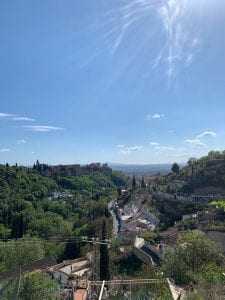 movement throughout the day! Walking is the name of the game. Everyone in the city walks almost everywhere they need to go because the city is small with the most important sites close to the center. Walking is normalized and it is not uncommon for people to take a 40-minute walk to work or school every day. On top of that, Granada is not a flat city by any means and many of the prettiest places, namely the Alhambra, Albaicín, and Sacromonte neighborhoods are reached by hiking up many hills and stairways. Just by going out to experience as much of the city as you can you are guaranteed to get about 15,000 steps in most days!
movement throughout the day! Walking is the name of the game. Everyone in the city walks almost everywhere they need to go because the city is small with the most important sites close to the center. Walking is normalized and it is not uncommon for people to take a 40-minute walk to work or school every day. On top of that, Granada is not a flat city by any means and many of the prettiest places, namely the Alhambra, Albaicín, and Sacromonte neighborhoods are reached by hiking up many hills and stairways. Just by going out to experience as much of the city as you can you are guaranteed to get about 15,000 steps in most days!
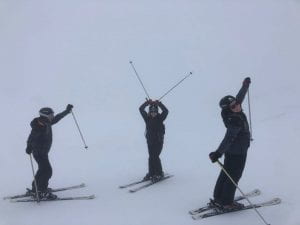 Genil towards Parque Tico Medina. You can continue past the park on a dirt road or run
Genil towards Parque Tico Medina. You can continue past the park on a dirt road or run .
. 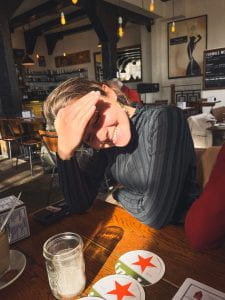


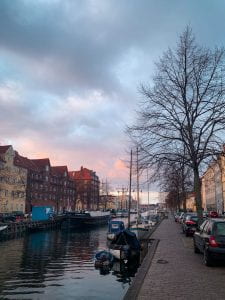 .
. 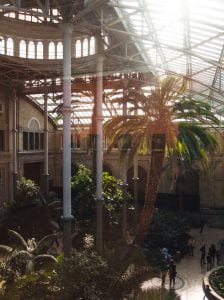
 .
. 



